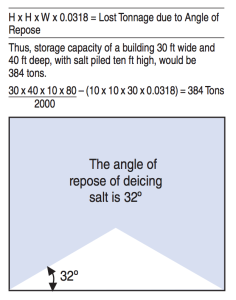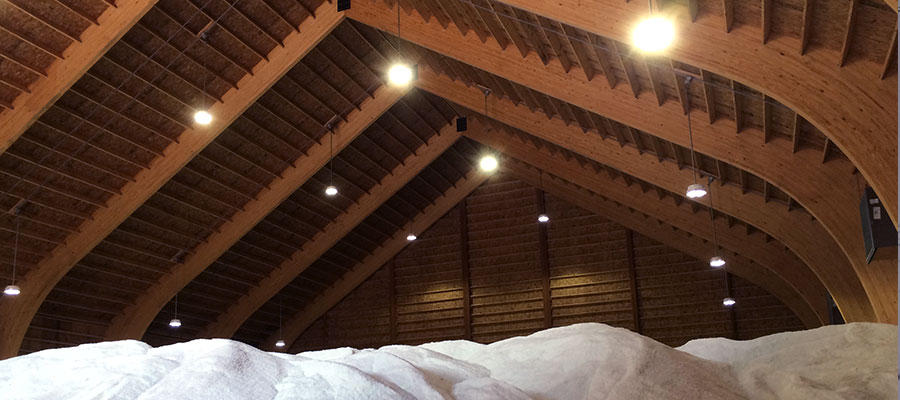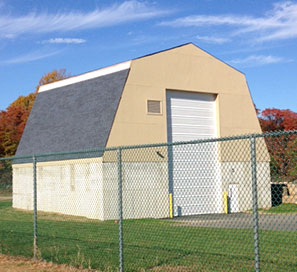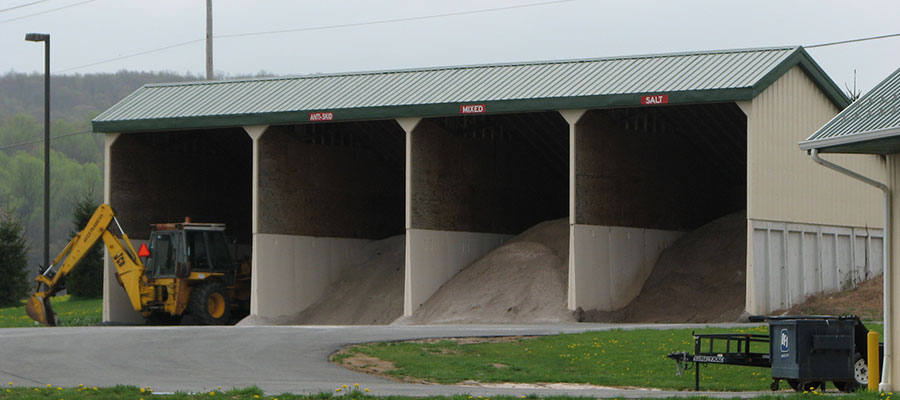Bulk Salt Storage: Why All Agencies Need It
As you may know, public works agencies are government agencies that are responsible for the maintenance of public property, including parks and streets. Their main purpose is to serve the community through recreational, employment and heath and safety services. Quite often, bulk salt storage buildings are common for these agencies.
So if your agency doesn’t have one, why should it? As a leading salt storage builder we’ll help you understand why. Below is some information from about salt storage and how a proper salt storage building can benefit your agency.
What to think about before building a new salt storage building?
- Zoning – As with all structures, you need to be aware of the zoning laws and restrictions.
- Location – Do you need multiple storage buildings to accommodate a large area? Having trucks travel long distances to refill isn’t efficient or economical. Consider this during the planning stage.

- Space and Tonnage – Once you have a size in mind for your building(s) and have reviewed the zoning requirements, then its time to figure out how much tonnage you want to store. Divide the weight in pounds by 80 to get the number of cubic feet required and figure out the amount of space lost due to the slope of the salt pile. For example, a 30′ wide and 40′ deep with a 10′ pile of salt building would hold 384 tons of salt. (see figured to the right) The team at Conestoga Buildings can assist with these calculations for your specific project.
- Accessibility – Its important that trucks and loaders can easily access the area. This includes a large enough area for complete movement of the truck.
- Coverage – If adding doors to your high arch salt shed, all door openings should be a minimum of 20′ wide. Hinge doors that can be secured in the open position will allow operating in high winds.
- Drainage – You want to make sure to have proper slope and avoid draining into any freshwater in the nearby area.
- Interior Paint – Adding light-colored paint to the inside of the storage facility will enhance the reflection of light and provide additional visibility.
- Lighting – Inside the building, lights should be placed high and to the side to avoid interaction with salt.

Why does salt need to be properly stored?
 Salt is best stored out of the weather. Also, salt storage buildings should be able to accommodate enough salt to last through the winter months… and then some. Agencies can come up with approximate amounts of salt they need based on anticipated storms but with the unpredictability of the weather, it is not a tried-and-true solution. It can cost time, money and safety if an emergency shipment of salt needs to be brought into an agency. Here are the 3 main reasons to invest in a high arch, gambrel style salt storage building from Conestoga Buildings:
Salt is best stored out of the weather. Also, salt storage buildings should be able to accommodate enough salt to last through the winter months… and then some. Agencies can come up with approximate amounts of salt they need based on anticipated storms but with the unpredictability of the weather, it is not a tried-and-true solution. It can cost time, money and safety if an emergency shipment of salt needs to be brought into an agency. Here are the 3 main reasons to invest in a high arch, gambrel style salt storage building from Conestoga Buildings:
- To prevent the salt from dissolving due to exposure to rain or snow.
- To avoid contamination of groundwater or streams from salt runoff
- To decrease clumping of salt which can cause issues for the equipment spreading the salt
When is the best time to build a salt storage structure?
Commonly, bulk salt storage buildings are constructed in the spring/summer months. During this time, many agencies are preparing their purchases for salt and arranging pre-season delivery. Since you want your structure completed before your delivery arrives, its best to get started early.
General Info: Why is salt used in the winter months?
- Salt is economical and great for deicing. Bulk salt is the most economical deicing material available. The cost is low and it’s easy to store and handle. Not to mention, it takes no time to spread it with automatic equipment.
- There is no expiration date on salt. Salt is salt and even after years of sitting, its still salt. Its effectiveness does not diminish and as long as it’s stored correctly, it remains intact and ready to use. (There maybe some ‘crusting’ on the surface but that’s easy to break up) And for those who are familiar with salt storage, you know that salt doesn’t absorb moisture until the humidity exceeds 75%.
- Salt is safe. Even though salt isn’t always safe for our vehicles, it is safe for us and that is what public works agencies care about most. It doesn’t harm us if we come in contact with it. Also, it doesn’t ruin clothing when handled.
Whether you are a public works agency looking to build a salt storage building or someone who is curious about these simple but functional buildings, we hope you gained some insight through this article. The team at Conestoga Buildings built many bulk salt storage structures over the years. Let our experience and knowledge help you through this process. Contact us today to discuss your project!
[Facts in this article were obtained from the 2015 salt storage handbook, published by SaltInstitute.org]

